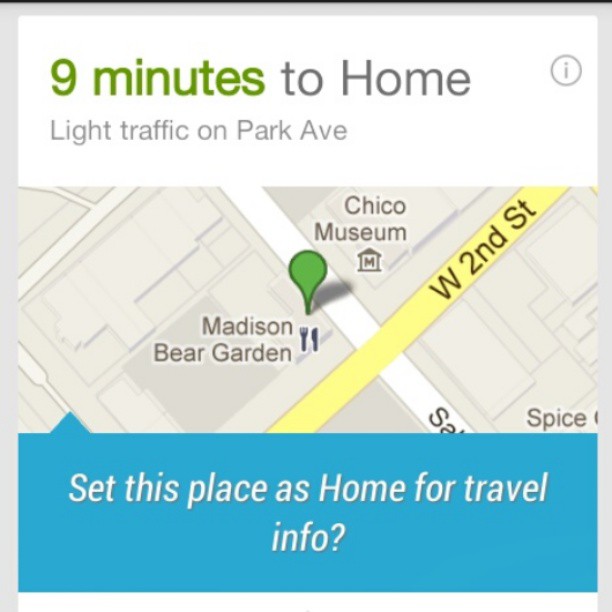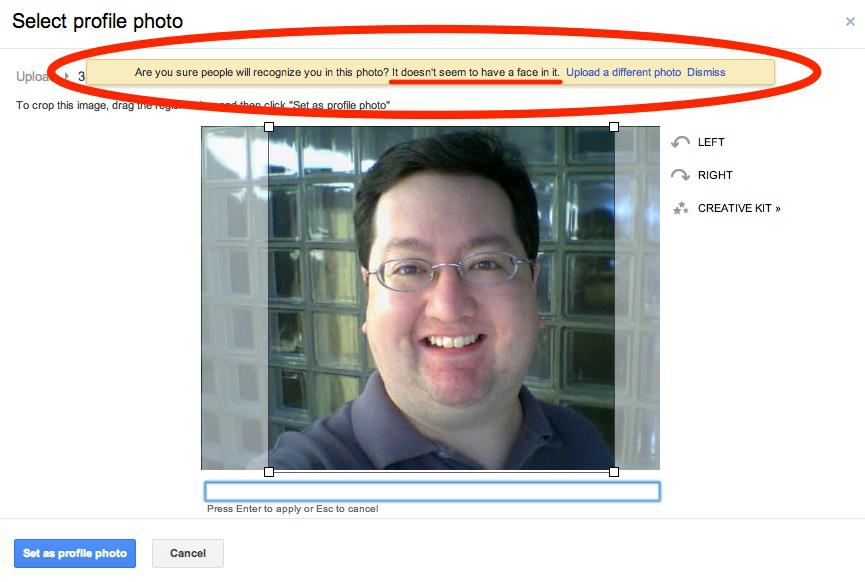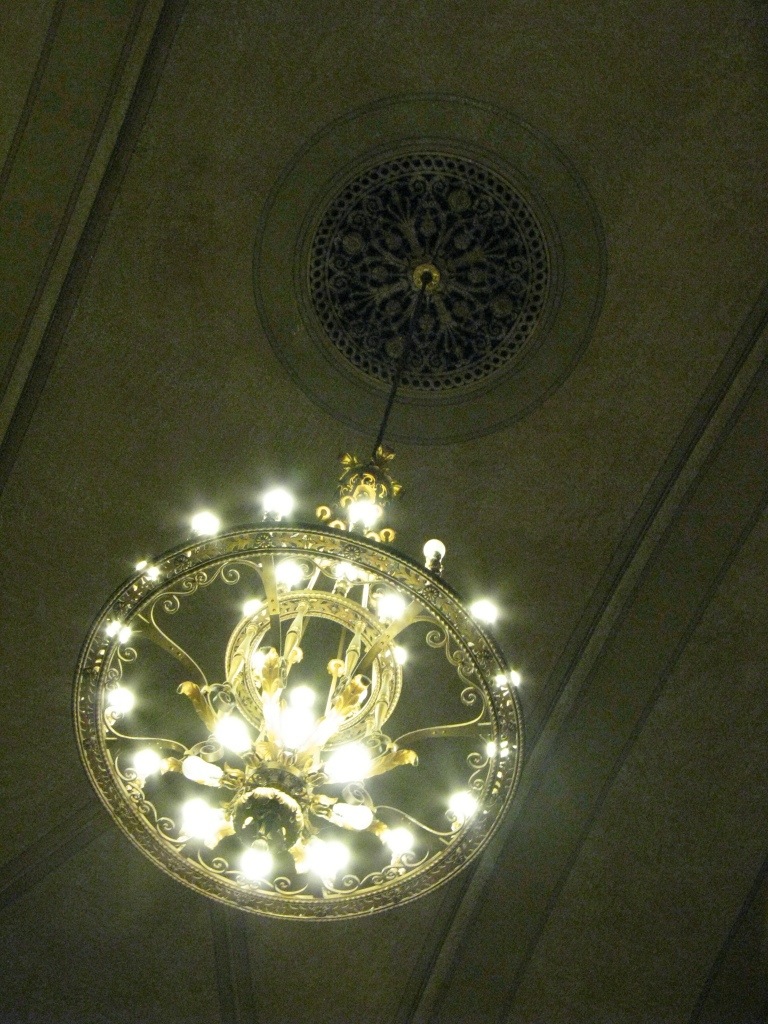I’ve been excited to try out a new home screen, or launcher, for my Samsung Galaxy S II (Epic 3G Touch).
Since April, I’ve been using the default TouchWiz launcher that came with the S II. However, I’ve recently been intrigued to try the new launcher from Google — apparently called the Google Experience Launcher or Google Home.
Unfortunately, it didn’t seem like I was going to be able to try it out — the new launcher was part of the latest version of Android dubbed KitKat — and Samsung wasn’t planning to publish an update to my now two-year-old phone. Even if it did, there was no guarantee it would be made available on the Sprint network.
I was pleased to discover via Android Police that the tools available to enable the new launcher would work on my phone — or any phone or tablet running Android 4.1+. I needed the latest version of Google Search and the Launcher app (provided on the Android Police website). After a quick install, I was off to the races. I thankfully didn’t need to root my device or sideload from another device because they seem like too much of a hassle.

… and in with the new with the Google Experience Launcher, a.k.a. Google Home. A screenshot of the new launcher on my Galaxy S II.
At first, the differences in the home screens are pretty subtle. It appears to run very smoothly on my S II and seems very responsive in most actions. There’s one exception — the screen seemed to jarringly jump around when dragging icons from the list of applications to create new shortcuts on the home screens.
On a positive note, it’s a bit fun that the wallpaper seems to stretch across multiple pages. The swan and the Palace of Fine Arts subtly shift as you swipe from page to page.
One of the biggest changes is that the Google search bar is now on _every_ page of the home interface (in TouchWiz, the Google bar was a widget that the user could choose to put on their phone).
Although the search bar is always there, Google did a nice job of tweaking icon sizes and layout to maximize space and it turned out I could have more apps or widgets on my primary home screen (the old widget took up four icon positions in a row).
This ever-present search bar probably won’t endear itself to those critical of Google’s increasing intrusion into people’s lives (and privacy). It’s important to note the new launcher is apparently an extension of the Google Search app, as reported by Ars Technica. Basically, the app _is_ the new home screen for phones that choose to use it.
I understand the reservations about Google blatantly taking over a user’s home screen compared with it lurking in the background. Thankfully, one can still switch between launchers, although I’ve temporarily settled on Google’s as the default for now.
Touching the Google search bar merely opens an expanded and simple search page. This is different than Google Now or the old Search app interface. I feel it would be more convenient to switch into Google Now, but that doesn’t seem to be in the cards for now.
Speaking of Google Now, it’s now accessible by swiping all the way from left to right.
I think one of the most useful changes is the ability to launch a voice search from the home screen by saying “OK Google.” Apparently, the new Moto X (and Droids) can do this while the screen is off, but it’s still useful.
Other things I noted is that not all widgets seem to work with this new Google home. The notification tags also weren’t showing up. My old Accuweather widget wasn’t available and I couldn’t view the widgets from the Yahoo! Weather app. I hope that this will be fixed (or is perhaps a shortcoming of how the app works on my phone).
Perhaps another sign of this launcher’s roots in the Google Search app is that the settings menu goes to the app’s settings and not the phone’s. I was used to the settings menu accessing the phone’s configuration and this more limited functionality was a bit of let down. I created a shortcut, but it’s not quite the same.
Also, the icons and text seem a tad too small for my eyes, but they don’t seem that much smaller compared with TouchWiz. It may be due to the apparently tighter layout because it looks more like a solid wall of icons unless I use a widget to break up the space (I have six more apps on my primary screen under Google Home than TouchWiz).
The differences between this and TouchWiz seem to be pretty subtle, but it’s nice to try something new. That is something that isn’t easily accomplished on iOS, where you’re generally stuck with whatever Apple gives you. Still, we’re talking about different, yet incredibly similar ways to display rows of icons and some widgets on a smartphone. I’m pretty happy with all three offerings.
Ultimately, I’m happy I can give the Google Experience Launcher a shot. I can spruce up my old phone although I can’t have the full KitKat experience (at least until I can get the Nexus 5).










10 reasons why ‘The Purge’ premise rankled
Although it recently left local theaters, I wanted to mention why the advertisements and basic premise of “The Purge” teed me off. I had no intention of seeing it — this sort of home under siege thriller is not my kind of movie, but the dystopian future concept was infuriatingly flawed. I was constantly thinking of more and more reasons why it couldn’t work (or would very quickly fall apart).
The A.V. Club posted a review of the film and I added a comment detailing why I thought the society of “The Purge” would simply be unworkable based from the ads. My comments on the matter received 137 likes from fellow commenters, so I thought I would present them here.
I supplemented the list after someone who saw the movie pointed out some details that were missing from the trailers. It was interesting, but it didn’t seem to make the premise any more workable than before.
I’m sorry this is a bit long, it’s been bugging me for weeks for all the reasons stated above — and the fact that “Star Trek” did it as a small aspect of an episode nearly 50 years ago (the “Red Hour” in “The Return of the Archons“).
Apparently, that’s not a coincidence — the writer/director apparently had it in mind, according to Badass Digest.
I should probably accept that this home-invasion movie isn’t for me, but the half-baked political angle rankled.